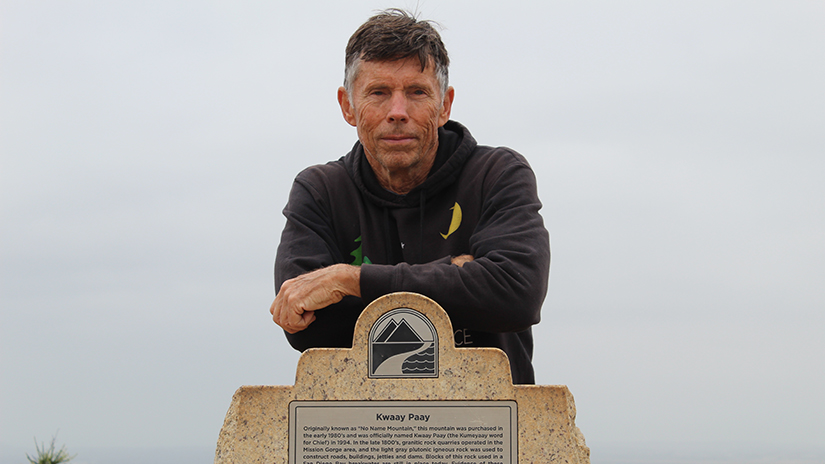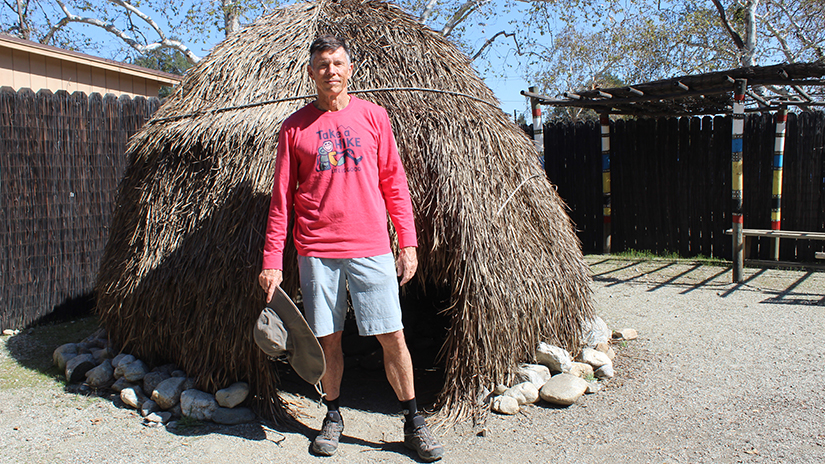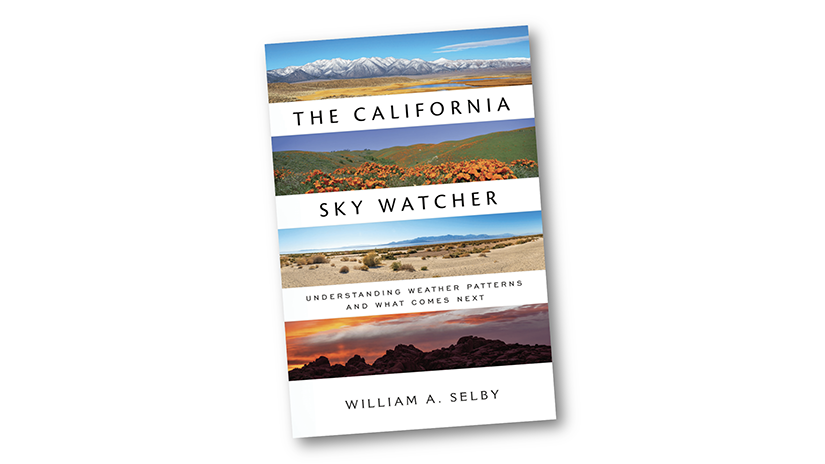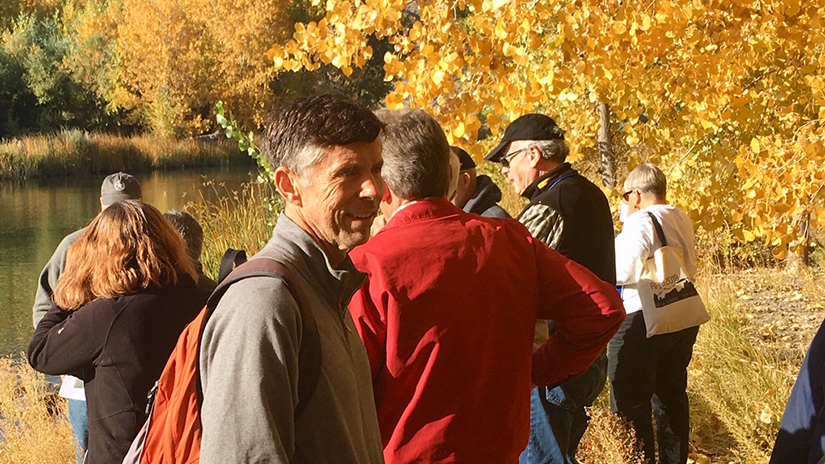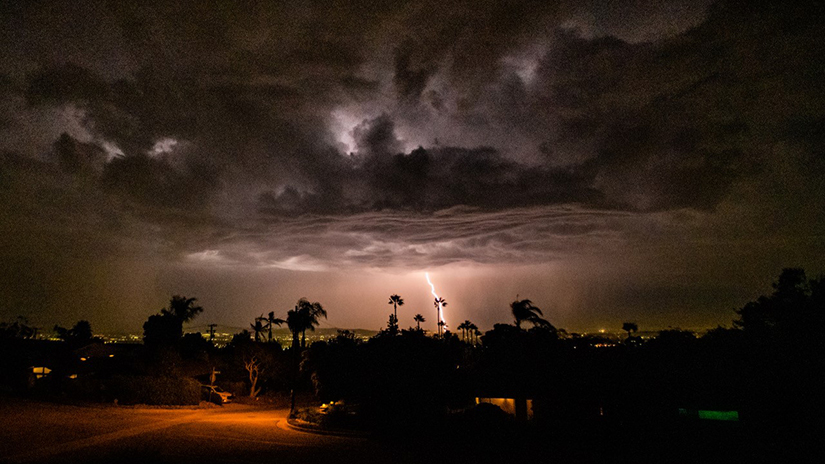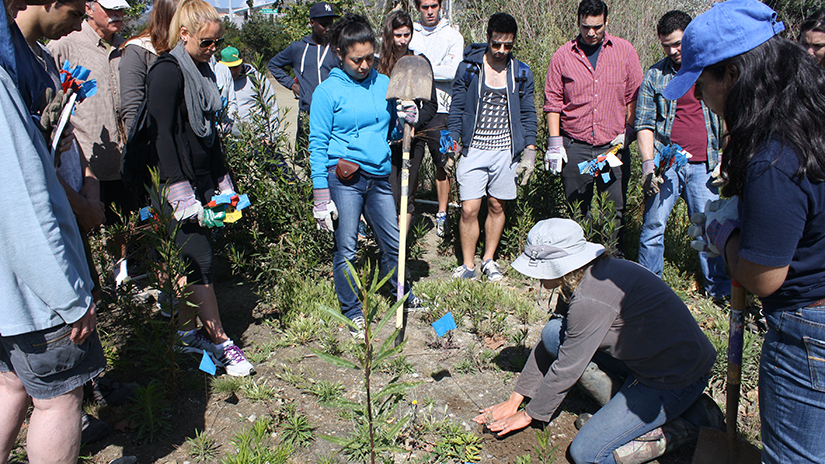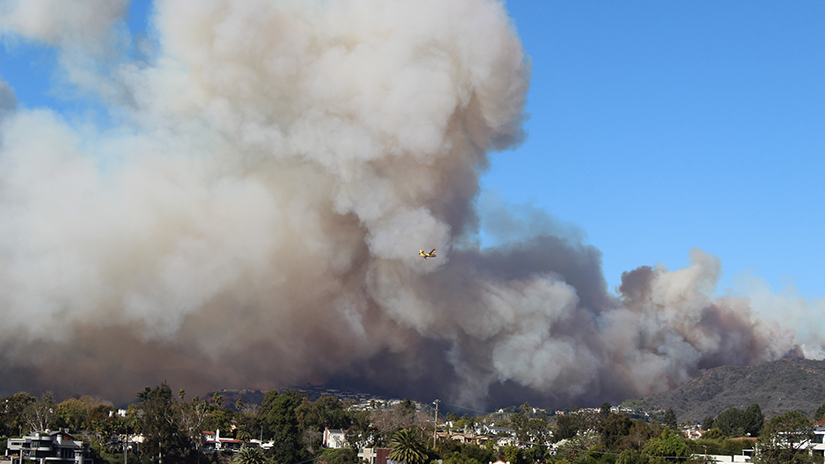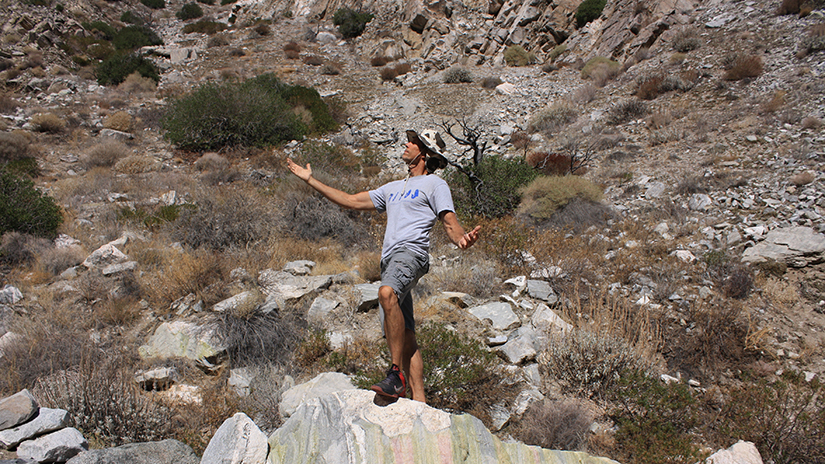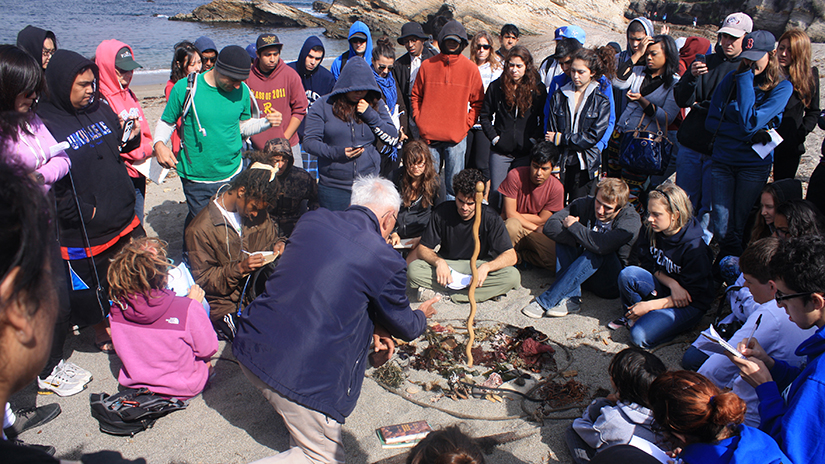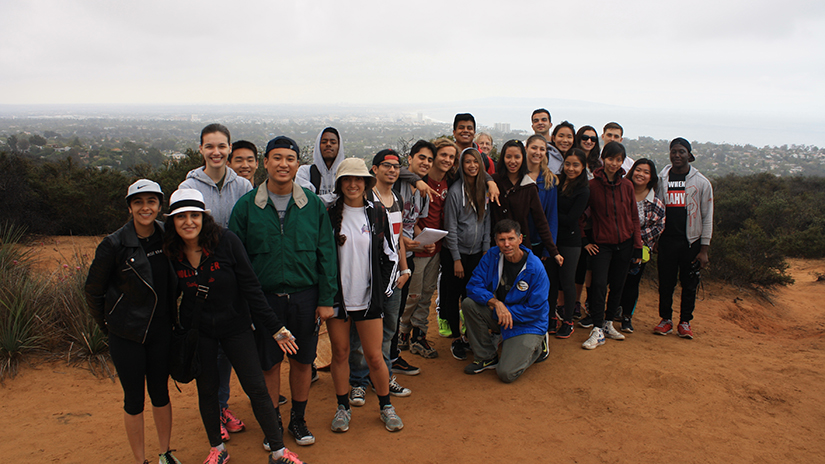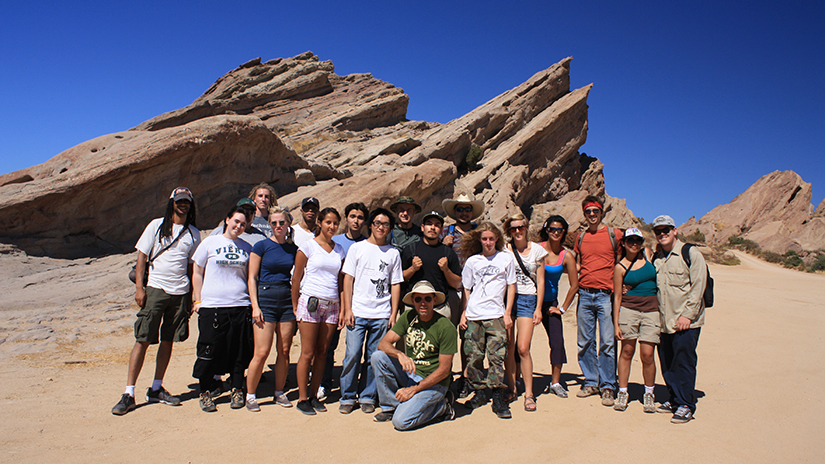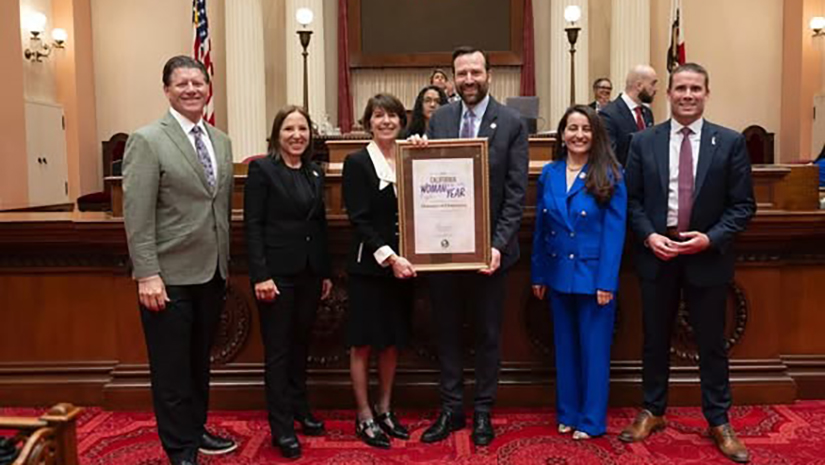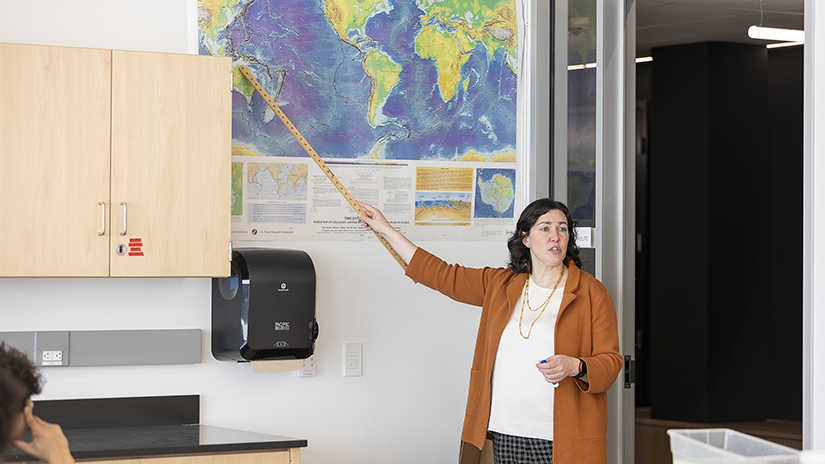
With Cassandra-like certainty, Bill Selby foresaw the approaching calamity. Conditions were more than ripe.
Take two years of heavy rains (triggering superabundant growth in the chaparral) followed by a record nine months of drought (ensuring the desiccated plant communities would ignite at the first spark).
Add epic Santa Ana winds, unseasonably warm winter temperatures, and low humidity along the wildland-urban interface.
“It was the formula for this terrible firestorm,” says the Santa Monica College emeritus professor of geography.
Bill watched that fateful Tuesday morning in early January as the “devil winds drove a little puff of smoke into the canyon.” From the stairs at the end of Fourth Street overlooking the Pacific Palisades, he saw the disaster unfold. Fire naturally moves uphill, and Bill initially had hoped this would save the Palisades, which lay downslope of the original flare-up. “But I could see the embers flying off and starting new spot-fires half-a-mile ahead,” he says. “Within an hour, it had gone from puffs of smoke to a conflagration. There was no way firefighters could stop it.”
Bill is a leading authority on California’s climate, having explored, researched and worked in every corner of the Golden State. After three decades on SMC’s earth sciences faculty, he retired from teaching in 2017, but remains busier than ever. His popular geography textbook, Rediscovering the Golden State, is now in its fourth edition, and in January, his feature article on atmospheric rivers was on the cover of Weatherwise, the nation’s premier climate magazine endorsed by the American Meteorological Society. He lectures and gives workshops all over the state.
For years, Bill taught a host of SMC earth sciences courses, including Geography 3, “Weather and Climate,” and Geography 14, “California Geography.” These two courses were the bedrock for his latest book, The California Sky Watcher (Heyday Books, July 2024), which takes readers on a road-trip through the Golden State’s immense meteorological diversity across the four seasons.
“California contains examples of most major climates on Earth, except for the tropics,” he writes in the foreword. “Each year, somewhere and someone in the state is at least temporarily impacted by nearly every weather event and air mass that can be experienced.”
Bill was back on campus this week to deliver a talk on Earth Day, as he has in past years. He spoke about the wildfires and their relationship with California’s highly complex weather patterns.
*
So what exactly happened in January to bring on the catastrophe?
The stage was set by an exaggerated instance of the state’s seasonal “bipolar” pattern. It’s normal for Northern California to be far wetter than Southern California in the fall-and-winter months, but this year the divide “seemed to be on steroids,” Bill says.
“Winter’s rainy season roared in like a lion in the north, renewing concerns about flooding,” Bill wrote in a January 11 blog post, as the wildfires still raged. “But the storms were no-shows in the south, extending summer’s drought and fire season well into the new year. Jet streams, storm tracks and soaking atmospheric rivers raced toward Northern California early in the season… But by the time they crept farther south into Central California, they encountered unseasonably resilient high-pressure ridges that blocked their progress.”
Seasonal rainfall totals lay bare the chasm in precipitation between north and south last year: from 50 inches near the Oregon border to less than 0.25 inch along the Southern California coastline.
We all know what happened next. Extraordinarily powerful 70-mile-per-hour winds descended on the Southland. “I’ve never seen anything quite like it. One night it felt like there was a helicopter over our house,” says Bill, who lives in Santa Monica but was born and raised near the Santa Ana canyon for which the devil winds are named.
Like most climate scientists, Bill attributes these extreme weather events to trapped greenhouse gases, which allow short-wave energy from the sun to get through but keep long-wave heat trapped in Earth’s atmosphere.
“It’s like rolling up the windows in your car on a sunny day. Nature is trying to distribute that extra energy somewhere else,” he explains. The result: increasing climate chaos. Or, as Bill puts it, “a series of disasters just waiting to happen.”
*
So what can we do about it? Bill offers a few insights:
- on a global level, he says, “we need to get these greenhouse gases under control. There are two ways of doing it: either decrease production of greenhouse gases, or figure out ways to get them out of the atmosphere through sequestration.”
- on a local level, he says, “we need to stop development in wildland-urban interfaces (WUI). In places like the Palisades, where we’ve already built up WUI spaces, we need to rebuild smarter, using fire-resistant materials.”
- on a personal level, he says, “we need to connect to our natural cycles and systems. Our popular culture encourages us to consume things we don’t need, to over-charge our credit cards and to value material wealth that doesn’t really make us happy. We need a paradigm shift. The average American uses between 17 and 25 acres of the Earth’s productive surface every year. If everyone on the planet required that amount of resources, we would need four or five Earths to support them.”
*
While Bill isn’t exactly optimistic that we can change our ways, he’s extremely energetic and doing his best. At 70, he’s turned himself into a one-man minstrel show for climate consciousness and weather appreciation. “There’s an opening here for us to improve the quality of people’s lives and also clean up the environment,” he says.
His new book is part of a larger project to encourage people to connect and reconnect to their natural world. In what he calls the California Sky Watcher Road Show, Bill travels the state and curates interactive experiences for audiences of all ages, teaching workshop participants how to identify and appreciate different cloud formations, read natural history through a weather-focused lens, and even make their own DIY weather forecasts using government websites.
In late March, he brought the roadshow to Yosemite National Park for the local conservancy’s annual gathering. He returned to Yosemite in mid-April as an instructor in the California Naturalists spring program. While he was there, Bill educated park rangers and docents about Yosemite’s weather-related mysteries and led them on climate-themed day and night walks. In late May, he’ll take the roadshow back to the Theodore Payne Foundation in Sun Valley.
You can hear an in-depth interview with Bill at the New Books podcast. To read a play-by-play of the unfolding disaster explained with weather maps and dramatic photos, or to learn more about the climate patterns that set the stage for the catastrophic 2025 California wildfires and their aftermath, visit Bill’s blog at www.rediscoveringthegoldenstate.com.
* * *




